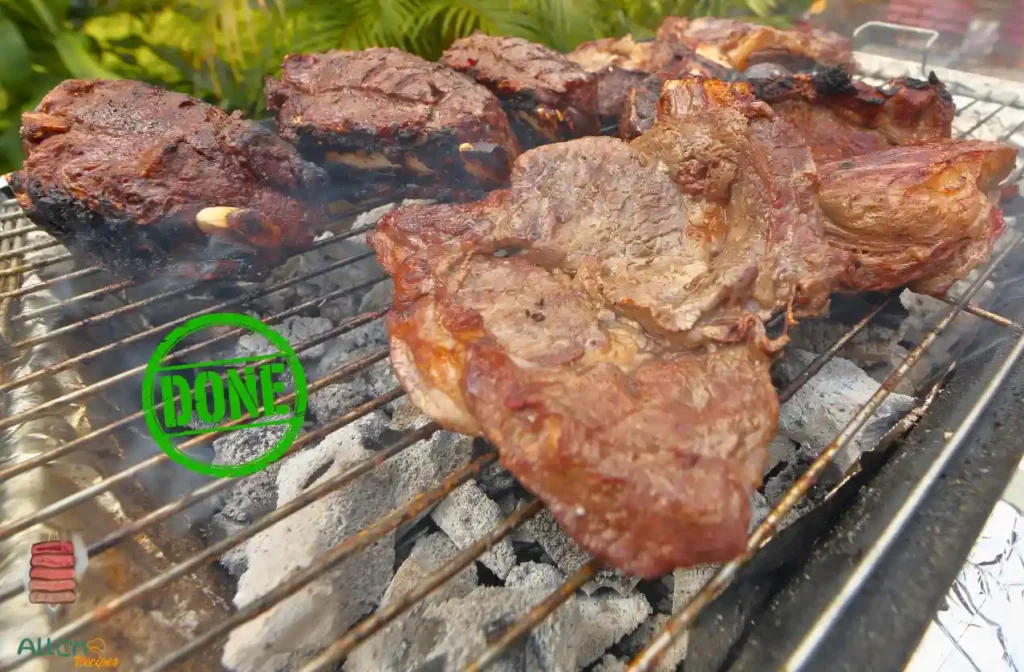I get this question a lot, mostly from people who’ve either undercooked a steak that looked fine on the outside or sliced into one too soon and watched all the juices disappear into the board.
The truth is, steak doneness isn’t about guessing. It’s not about “how firm it feels” or whether you saw a chef once poke the meat with their finger and claim they just knew. It’s about heat, timing, and knowing what’s going on inside the steak, not just what it looks like from the outside.
Here’s what I’ve learned, after plenty of trial and error, burned crusts, and overcooked centers.
The Numbers That Matter
Forget the colors, forget “it should feel like your palm”, let’s talk actual temps. These are the internal temperatures to aim for. And yes, use a thermometer, it’s not cheating. It’s just smart.
- Rare: 120–125°F
- Medium-rare: 125–130°F
- Medium: 135–140°F
- Medium-well: 145–150°F
- Well-done: 155°F and up (but let’s be honest, you came here for flavor, not shoe leather)
Now here’s the trick: pull the steak off the heat a few degrees early. It keeps cooking after it leaves the pan, that’s called carryover cooking. If you wait until the thermometer says 130°F, you’ll overshoot medium-rare every time.
So for medium-rare? Pull at 125°F. Rest it, and it finishes right where you want it.
Why It Keeps Cooking
Meat’s made of muscle fibers, water, and fat. When heat hits it, water moves inward. The hotter it gets, the more the proteins tighten up, and if you go too far, the juices get squeezed out, leaving it dry.
Resting lets everything settle down. The juices redistribute. The temp evens out. That’s why people say, “rest your steak.” They’re not just being fancy, it’s legit science.
What If You Don’t Have a Thermometer?
You’re not totally out of luck, but you’re in guessing territory. You can do the “finger test” (press your thumb and different fingers together, feel the pad under your thumb, you’ve probably seen the chart).
But here’s a better approach: watch the sides of the steak. As it cooks, the raw red edge starts to fade upward. That gives you a decent idea how far along the center is. Then touch the top gently. If it’s super soft, you’re still rare. If there’s resistance but still bounce, you’re in medium-rare to medium territory. Firm and tight? You’ve gone past medium.
Still, a $15 thermometer beats guessing.
One More Thing About Thickness

A thin steak cooks fast. You don’t have time to check doneness because it’s over before you look. That’s why thicker cuts, like a proper Delmonico, are easier to control. You can sear the outside without nuking the inside. You’ve got room to work.
So if you’ve been struggling to hit that medium-rare sweet spot, try using a thicker cut. More forgiving. Better crust. Juicier center.
Visual Clues (Not Always Reliable, But Helpful)
- Rare: bright red center, very soft
- Medium-rare: warm red center, some bounce
- Medium: pink center, firmer feel
- Medium-well: mostly brown, little give
- Well-done: gray-brown throughout, no bounce, dry edge
Keep in mind, lighting lies, and so do your eyes sometimes. Always go back to the thermometer when you care about getting it right.
Final Thought
Steak is simple, but getting it right takes a little know-how. Doneness isn’t about guesswork or flair. It’s about learning what the numbers mean, using the right tools, and giving the meat time to rest.
Do that, and you’ll stop cutting into your steak early just to “check.” You’ll know. You’ll feel it. And you’ll taste the difference every single time.
- Chuck Delmonico Steak: What It Is and Why Chefs Love It – September 13, 2025
- Reverse Sear Delmonico Steak: My Foolproof Method – August 25, 2025
- The Smart Shopper’s Guide to Buying a Delmonico Steak – August 16, 2025

Leave a Reply